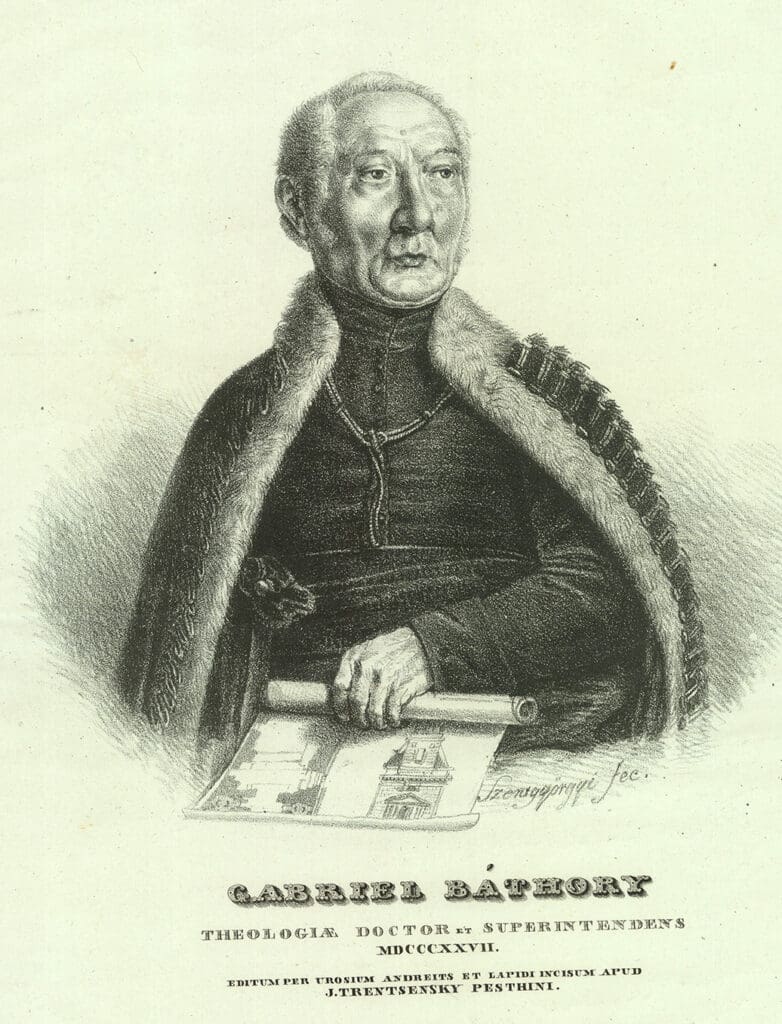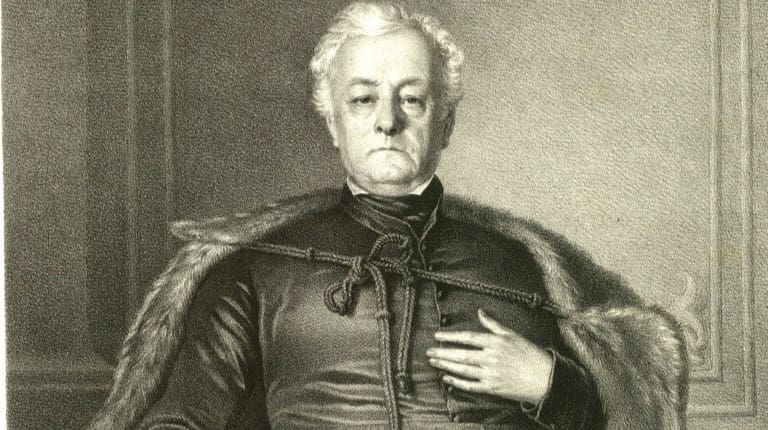Part VI: The Clothing of 19th-Century Protestant Ministers*
The early 19th century brought radical changes in the clothing of Reformed ministers, the background of which was the union between the Roman Catholic and Protestant Churches. At the beginning of the century, the idea of unification came to the fore, and Protestants who sympathized with this idea tried to make it even more visible to the public by wearing clothing similar to the cassock worn by Roman Catholic priests. Bishop Gábor Báthory of Dunamellék, however, expressed his disapproval of this and in 1816 reported to the diocesan assembly that the pastors were wearing clothes of a colour and cut unworthy of their vocation, which was offending their parishioners. He asked his preachers to wear black ‘dolman and cloak’ and to conduct their services in them. The bishop’s efforts were not in vain, for the report of the general’s visitation between 1816 and 1819 states that the ministers received Báthory in the clothing prescribed by him: they wore cloaks over their dolmans. This is the first written source on the wearing of cloaks, that is, it became common from 1816 onwards, first in the Danube region and then spread throughout the country. Not surprisingly, Báthory was opposed to unification efforts: in his view, unification was still impossible, but peaceful coexistence was in contrast feasible.
The only result of the unification efforts was that in the Danube region and Transdanubia
a new kind of clothing for Reformed ministers became widespread: the cassock of the Roman Catholics and the cloak of the Lutherans.
The stone-engraved portrait of Ferenc Tóth, superintendent of Transdanubia, which was drawn by his students in 1830, is clear evidence of this. The bishop is wearing a black cassock buttoned to the chin, a black silk cingulum (the waistband of the cassock with a fringed end) around his waist, and a narrow, crinkled black cloak over his shoulders, tied with a black ribbon under his chin. The neck of the cassock shows a white scarf or the neck of a white shirt. An interesting piece of information comes from the work of István Nagy, a pastor from Hajdúböszörmény, published in 1822, when he wrote the following about cloaks: ‘The priest’s cloak is his own shroud in his coffin, as when Elijah covered himself before the Lord with his cloak.’**

Then in 1848 the cassock was replaced by the ‘attila’ (Editor’s note: a short, fringed cape worn as part of the Hungarian traditional costume). Although the half-length braided dolman was pleasing to the eye, not everyone was in favour of wearing it, so it did not become compulsory. In a photograph taken on 11 August 1867 in Debrecen on the occasion of the General Assembly of the Diocese, the archpriests of the district can also be seen. The interesting thing about the picture is that the thirteen archpriests are wearing thirteen different types of garments, all of which have characteristic braiding, but all the attilas are cut in different shorter or longer styles. During the assembly, a minister ordination ceremony was also held, and a photograph was taken of the ordained ministers as well. The attire of the thirty-four pastors was broadly uniform: they all wore longer or shorter braided attilas, decorated with an Austrian knot, or warrior’s knot (Editor’s note: an elaborate design of twisted cord or lace worn as part of a dress uniform), on the sleeves, a waistcoat and tie under the attila, and boots on their feet. One of them had a cloak on his shoulders, and one of them wore a mitre of some kind. Besides, among them were two ministers who had neither moustaches nor beards.
In 1878 the idea of Reformed pastors wearing Lutheran robes (black robes with white plaques reminiscent of the stone tablets by Moses) was introduced. The proposal was put forward by Kristóf Barakonyi, pastor and archpriest, in view of the complete confusion about clothing. The archpriest wrote the following: ‘The Reformed pastors in Budapest and Debrecen wear attilas with cloaks, in the Transdanubian region cassocks with cloaks, and in the Transtibiscan region priests dress in a mixed style.’ Also in 1878 Reformed pastor József Kármán noted that Hungarian believers expected their pastors to wear ‘priestly’ garments, without moustaches and beards, lest they be mistaken for Polish Jews. In Paris, the attire of the French pastors appealed to Kármán, so he had one made for himself as well. It was somewhat similar to the Lutheran robe, but it was a tight, non-crinkled, corded, ankle-length suit with buttons in the front.
Of course, the way Protestant ministers dressed was often determined not only by their intentions but also by their financial means.
Those in lucrative positions could dress in cassocks, attilas, or fox-fur pelisses, but poor preachers, who were living from one day to the next, could at most put on a sheepskin jacket, something which the aesthetical believers had formerly protested against.
*This article was largely based on Béla Takács’s book titled A magyar református lelkészek öltözete (The Garments of Hungarian Reformed Church Pastors), Hernád kiadó, Debrecen, 2004.
**This and all the other quotations in the article were translated by Hungarian Conservative.
Read Part I, Part II, Part III, Part IV, and Part V:








